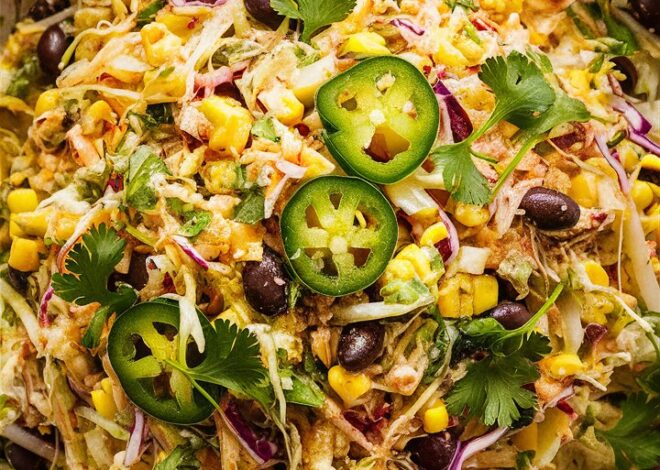
Restaurant-Style Shrimp Fried Rice You Can Cook in Under 30 Minutes 2025
Shrimp Fried Rice is one of those dishes that never goes out of style. Found in Chinese restaurants, takeout menus, food courts, and home kitchens across the world, it’s the ultimate quick meal that’s both comforting and satisfying. With juicy shrimp, fluffy rice, crisp vegetables, and a savory soy-based sauce, it brings together the perfect balance of flavors and textures.
The beauty of this dish lies in its simplicity: just a handful of pantry staples and some leftover rice can be transformed into something restaurant-worthy in less than 30 minutes. Whether you’re an experienced cook or a beginner, learning how to make shrimp fried rice at home is a skill worth mastering.
This complete guide will walk you through everything you need to know—from ingredients and cooking techniques to variations, storage tips, and common mistakes to avoid. By the end, you’ll be able to cook shrimp fried rice that rivals your favorite takeout, with the bonus of being fresher, healthier, and entirely customizable.
Why Shrimp Fried Rice Is So Popular
Shrimp fried rice has earned its place as one of the most beloved fried rice dishes for a few key reasons:
- Fast and convenient – It’s ready in under half an hour, making it perfect for weeknights.
- Deliciously versatile – You can adapt it to suit your taste, whether you want it mild, spicy, vegetarian, or gluten-free.
- Budget-friendly – Leftover rice and frozen vegetables are all you really need, plus shrimp, which cooks quickly and stretches far.
- Global appeal – Originating in Chinese cuisine, fried rice has been adapted worldwide. The shrimp version is especially popular because it feels slightly more indulgent than chicken or vegetable fried rice.
In short, it’s a dish that checks all the boxes: tasty, fast, affordable, and universally loved.
Key Ingredients and Their Roles
Getting fried rice right starts with understanding each ingredient’s role in the dish.
Shrimp
- Best size: Medium shrimp (26–30 count per pound) works best—they’re bite-sized and cook quickly.
- Preparation: Peel, devein, and pat dry. Tossing them lightly in cornstarch helps create a crisp, golden exterior when stir-fried.
- Flavor: Shrimp bring a naturally sweet and briny taste that balances perfectly with savory sauces.
Rice
- Best choice: Cold, day-old white rice (like jasmine or long-grain rice).
- Why cold? Fresh rice is moist and sticky, which clumps together when stir-fried. Chilled rice separates into grains, giving that signature fried rice texture.
- Alternatives: Brown rice for more fiber, quinoa for a protein-rich twist, or cauliflower rice for low-carb diets.
Vegetables
- Classic combo: Frozen peas and carrots are most common.
- Other great options: Bell peppers, corn, broccoli, zucchini, mushrooms, or edamame.
- Function: Vegetables add color, nutrition, and crunch.
Eggs
- Purpose: Scrambled eggs add richness and a soft contrast to the chewy rice and shrimp.
- Timing: Cooked separately, then folded back in at the end to preserve texture.
Aromatics
- Green onions: Provide mild onion flavor and freshness.
- Garlic & ginger (optional): Elevate the overall flavor profile.
Sauce
- Soy sauce: The main umami base.
- Oyster sauce (optional): Adds depth and a slightly sweet-salty flavor.
- Sesame oil: Finishes the dish with nutty aroma.
- Chili sauce or sriracha: Optional for heat.
Oil
- Choose a neutral, high-smoke-point oil: Canola, avocado, peanut, or light olive oil.
- Avoid: Butter or extra virgin olive oil—they burn too easily for high-heat stir-frying.
Step-by-Step Instructions (with Chef’s Tips)
Here’s how to make shrimp fried rice like a pro:
Step 1 – Prep the Shrimp
- Toss raw shrimp with 1 teaspoon cornstarch, a pinch of salt, and black pepper.
- Let it sit for 10 minutes—this creates a light crust when seared.
Step 2 – Cook the Shrimp
- Heat 2 tablespoons oil in a wok or skillet over medium-high heat.
- Add shrimp in a single layer and cook for 1 minute per side, until pink and opaque.
- Remove to a plate and set aside.
Chef’s tip: Don’t overcook shrimp—they’ll turn rubbery. Pull them as soon as they curl and turn pink.
Step 3 – Scramble the Eggs
- In the same skillet, pour in 2 beaten eggs.
- Gently scramble until just set, then remove and keep with the shrimp.
Step 4 – Sauté the Aromatics
- Wipe the skillet, add 1 tablespoon oil, and toss in chopped green onions (and garlic if using).
- Stir-fry 30 seconds until fragrant.
Step 5 – Fry the Rice
- Add 3 cups cold rice, spreading it evenly in the pan.
- Let it sit undisturbed for 2 minutes to crisp slightly.
- Stir and fry another 2 minutes, breaking up clumps.
Step 6 – Add Sauce and Vegetables
- Drizzle with 2 tablespoons soy sauce + 1 teaspoon sesame oil.
- Add peas, carrots, or your choice of vegetables.
- Stir well to coat each grain of rice.
Step 7 – Bring It All Together
- Return shrimp and eggs to the pan.
- Stir everything together until hot and sizzling.
- Taste and adjust seasoning (more soy sauce if needed).
Serve hot, garnished with extra green onions or sesame seeds.
Pro Tips for Perfect Shrimp Fried Rice
- Use day-old rice – Moist rice turns mushy. Refrigerating rice overnight dries it out.
- Cook proteins separately – This prevents overcrowding and sogginess.
- High heat is key – A hot pan ensures everything fries instead of steams.
- Don’t stir constantly – Let rice sit to crisp up before tossing.
- Finish with sesame oil, not cook with it – It’s an aromatic, not a frying oil.
- Taste before salting – Soy sauce already adds saltiness.
Variations and Substitutions
Shrimp fried rice is endlessly adaptable. Here are popular variations:
- Chicken Fried Rice – Swap shrimp for diced chicken breast or thigh.
- Vegetarian Fried Rice – Skip the shrimp and add extra veggies or tofu.
- Beef Fried Rice – Thinly sliced steak works beautifully.
- Spicy Fried Rice – Add Thai chili, gochujang, or sriracha.
- Low-Carb Version – Use cauliflower rice instead of regular rice.
- Gluten-Free – Use tamari or coconut aminos instead of soy sauce.
What to Serve with Shrimp Fried Rice
While it’s satisfying on its own, you can turn shrimp fried rice into a complete meal with these sides:
- Spring rolls or egg rolls
- Steamed dumplings
- Asian cucumber salad (light and refreshing)
- Hot and sour soup
- Kimchi (for a Korean-inspired pairing)
Storage, Freezing & Reheating
One of the best things about shrimp fried rice is that it stores well:
- Fridge – Keep in an airtight container for up to 3 days.
- Freezer – Store in freezer bags for up to 2 months. Flatten bags for easier reheating.
- Reheat – In a skillet with a splash of oil or water; avoid microwaving for too long, which makes rice rubbery.
Common Mistakes to Avoid
- Using freshly cooked rice (too sticky).
- Overcrowding the skillet (leads to steaming, not frying).
- Adding soy sauce too early (makes rice soggy).
- Overcooking shrimp (turns chewy).
- Forgetting to taste-test before serving.
Nutritional Value & Health Benefits
Shrimp fried rice can be balanced and nutritious if prepared thoughtfully:
- Shrimp – High in protein, low in fat, and a great source of omega-3 fatty acids.
- Rice – Provides energy (carbohydrates). Opt for brown rice for added fiber.
- Vegetables – Supply vitamins, minerals, and antioxidants.
- Eggs – Add protein, healthy fats, and essential nutrients like choline.
Calories per serving (estimate with white rice and shrimp): ~400–450 calories.
FAQs About Shrimp Fried Rice
Q: Can I use freshly cooked rice?
A: It’s not ideal—day-old rice gives the best texture. If you must, spread fresh rice on a tray and chill it for at least an hour.
Q: What size shrimp is best?
A: Medium (26–30 count) is perfect: bite-sized, quick to cook, and easy to eat.
Q: Can I meal-prep this?
A: Yes! It reheats well in a skillet, making it ideal for weekly lunches.
Q: Can I add more vegetables?
A: Absolutely—bell peppers, mushrooms, broccoli, zucchini, or spinach all work well.
Q: What’s the best oil to use?
A: Peanut, avocado, or canola oil—anything neutral with a high smoke point.
Final Thoughts
Shrimp Fried Rice is the kind of dish that proves you don’t need complicated ingredients or hours in the kitchen to make something extraordinary. With just rice, shrimp, vegetables, eggs, and a few seasonings, you can whip up a meal that’s faster, healthier, and tastier than takeout.
The key lies in small details: using cold rice, high heat, and layering flavors at the right time. Once you master the technique, you can customize endlessly—different proteins, spice levels, vegetables, or even grain alternatives.
So the next time you have leftover rice sitting in your fridge, don’t reach for your phone to order delivery. Instead, fire up a skillet, grab some shrimp, and create your own homemade masterpiece. After one bite, you’ll see why shrimp fried rice deserves a permanent spot in your cooking rotation.

